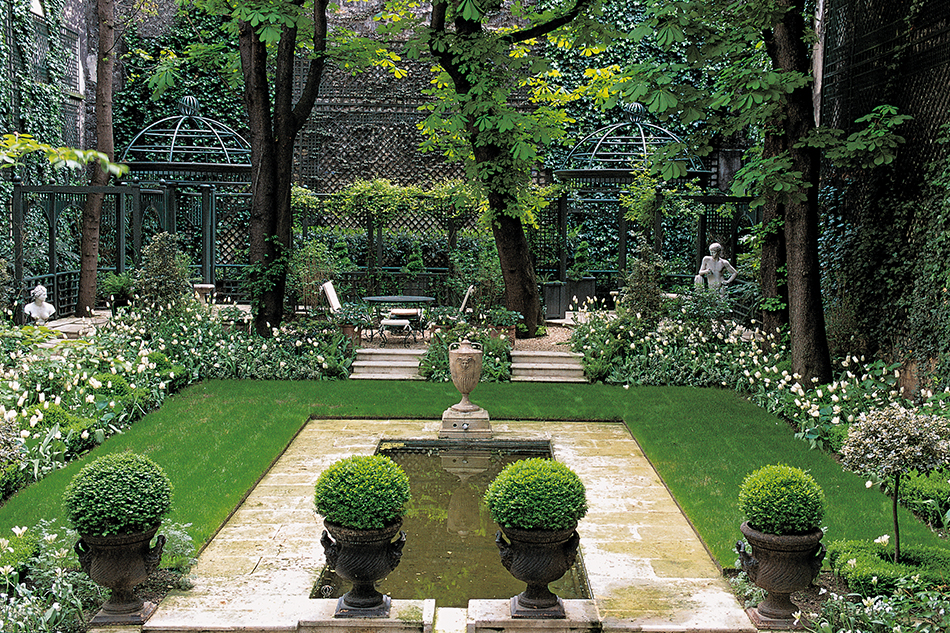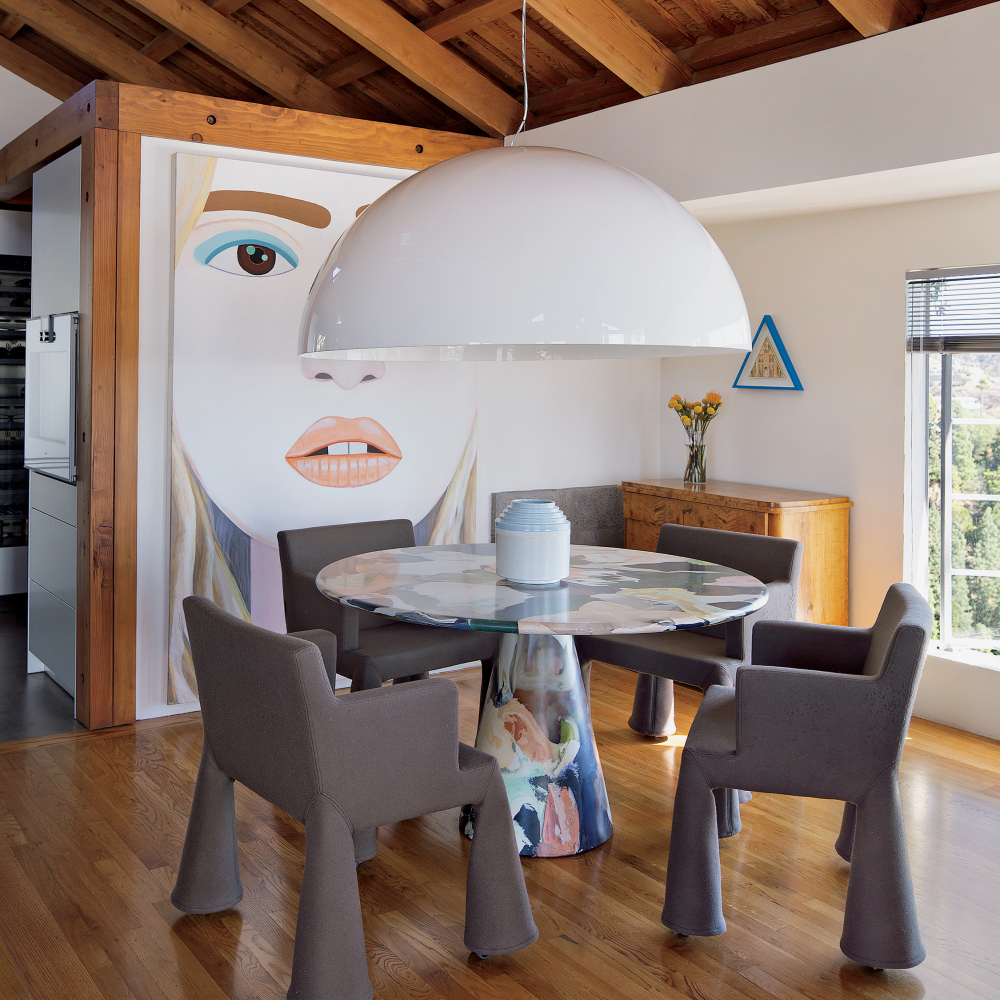
April 13, 2015In the garden that once belonged to celebrated tragedian François-Joseph Talma, a 200-year-old box tree shelters a drift of pink and white impatiens bordered with lavender. Top: The Left Bank garden of Pierre Bergé, co-founder of Yves Saint Laurent, features box hedges, creeping baby’s tears and tall grasses. All photos © Gilles de Chabaneix
Who knew that behind its grandes avenues, formal street facades and often forbidding courtyard gates, Paris could be home to so many delicious private gardens? Now, thanks to a reformatted and expanded edition of Private Gardens of Paris by Alexandra d’Arnoux and Bruno de Laubadère, with photographs by Gilles de Chabaneix, we are granted access to a remarkable number of these hidden enclaves.
“Paris has a very secret side, and it was wonderful to open up doors to offer readers another, and very private, vision of the city,” d’Arnoux said recently, going on to explain that owing to her role as a journalist and, at the time, the editor in chief of AD France, she had a strong network of decorators, interior architects and friends upon which to call. “Word of mouth was also a factor, and step by step, I was able to put together a set of beautiful private gardens.”
And how beautiful they are! Hubert de Givenchy’s magnificent spread on the Faubourg Saint-Germain is a classical garden of harmonious proportions, with allėes, symmetrical lawns, formal parterres and clipped boxwood. Another strikingly formal garden with trellises, arbors and statuary is the one designed by the noted English designer Arabella Lennox-Boyd, and then there is a more unorthodox approach — a mix of formal structure and informal plantings — made by Louis Benech for Pierre Bergé, who gave strict instructions to use no grass and, above all, not to create a white garden. (“A garden isn’t meant to be a cemetery,” Bergé said. “I hate conventional fashionable gardens. I like them to be adventurous.”)
“Paris has a very secret side and it was wonderful to open up doors to offer readers another, and very private, vision of the city.”

Originally part of the Russian pavilion at the Paris Exposition of 1867, this rustic domicile, or isba, was installed in the former Parc de Beauséjour; French windows leading into the building’s salon are framed by blooming rose bushes.
Then there are a handful of more surprising exotic and eclectic gardens. For instance, steps from the Bastille, on the grounds of a former factory, the couturier Kenzo, working with the Japanese designer, Iwaku, has made a full-fledged Japanese landscape garden with a stream, waterfall, carp and even stones brought from Japan. Another Asian-inspired paradise, thriving in the heart of the Left Bank, is a luxuriant subtropical garden, crisscrossed with stepping stones and forked paths (no straight lines here) that is home to huge tree ferns, willows and high bamboos. Still more unusual is a garden in the Muette area of Paris that is planted in front of a wooden Russian isba, or log hut. Once part of the Imperial Russian pavilion at the Paris Exposition of 1867, the structure, which has timber walls and a roof ornamented by perforated wooden trim, was later moved to its current location, where its present owner has used it as the architectural backdrop for his peonies, hydrangeas and potted rhododendrons. Other surprises include a vegetable garden that backs up against one of the walls of the Père-Lachaise Cemetery and a bog garden in the 7th arrondissement, which comprises three levels and is replete with an African hut and a huge rock under which flows a pretty spring.
D’Arnoux has presented such a variety of garden styles that it is hard to believe they can exist in one city. Asked to choose her favorite, she wisely demurred, saying only, “Yes, I find gardens designed by famous landscape designers are marvelous but others created by amateurs with a sense of style, good intuition and a real knowledge of plants have a charm of their own, and lots of personality.”








